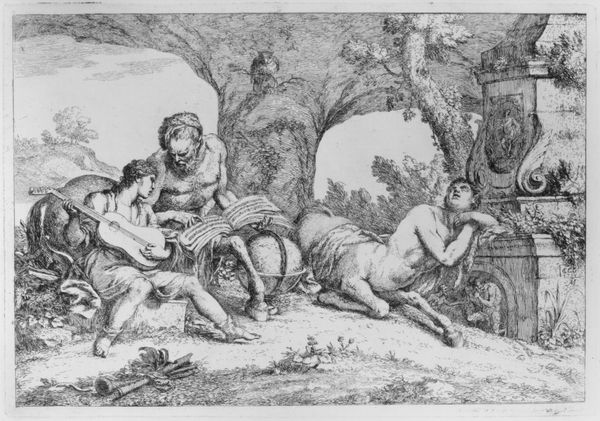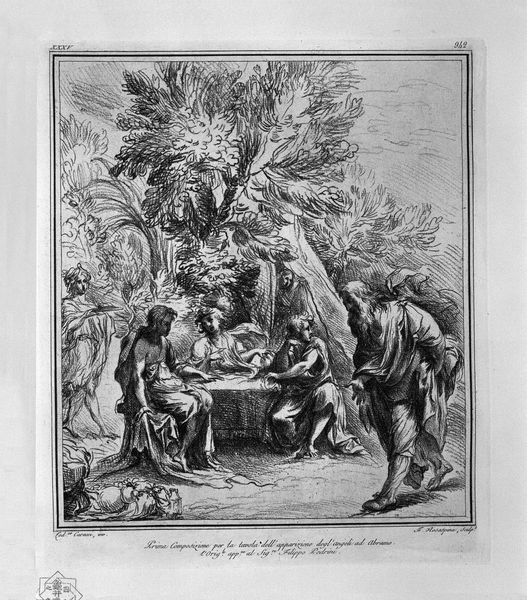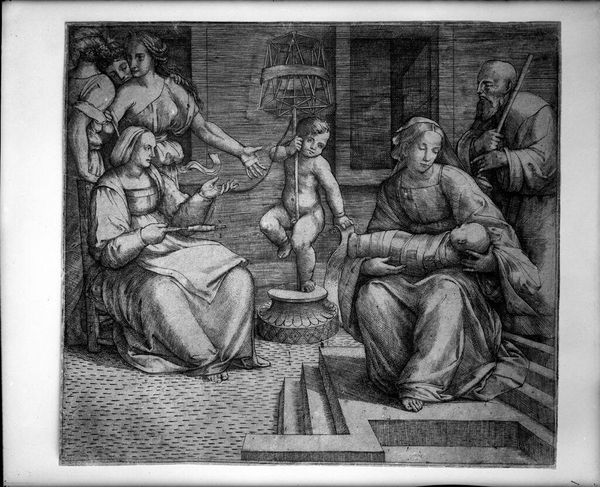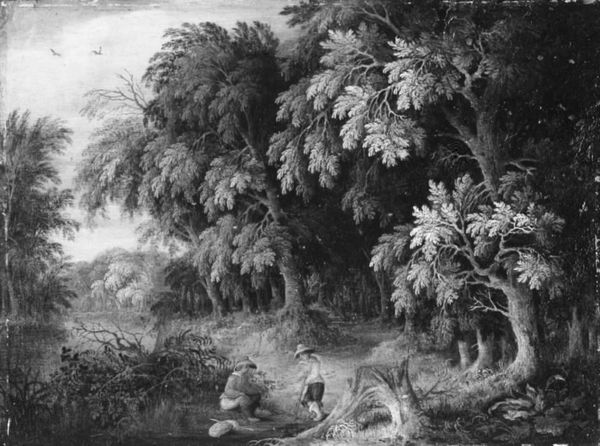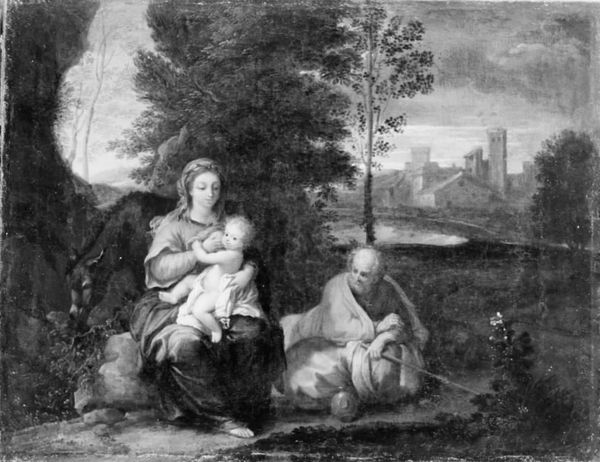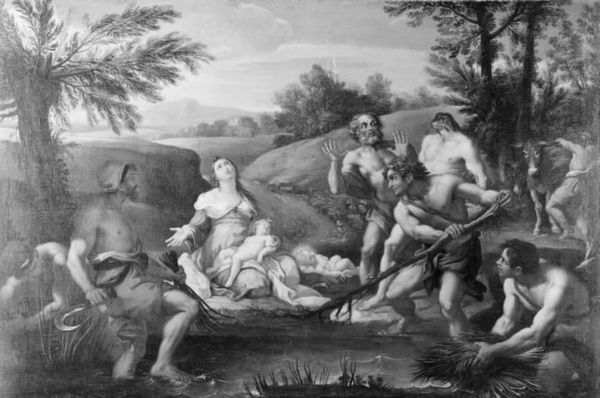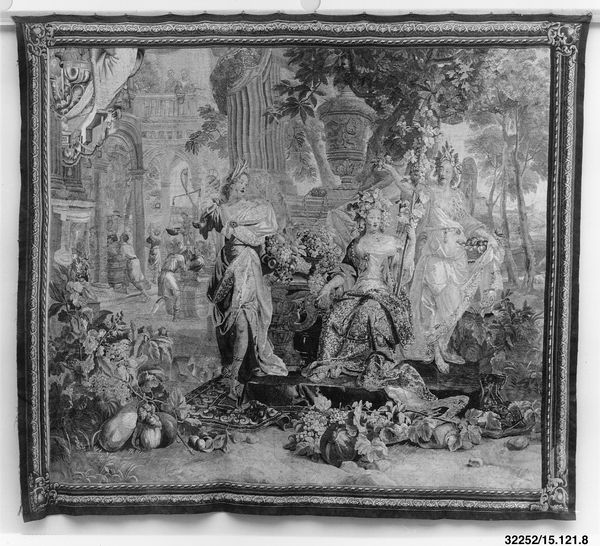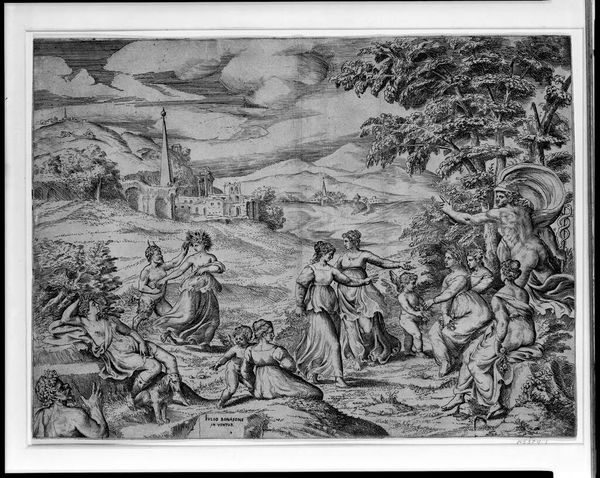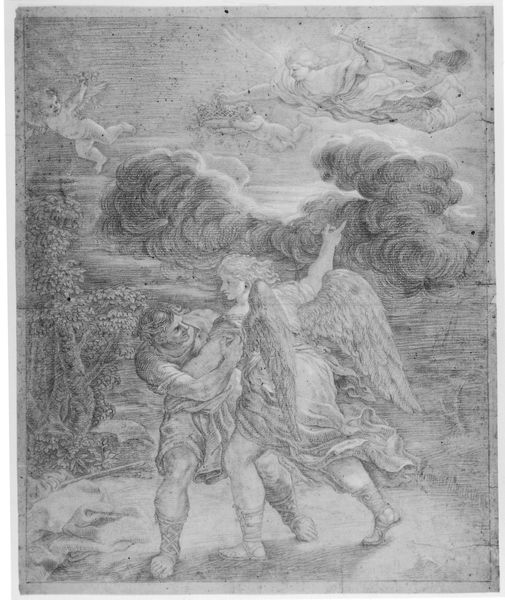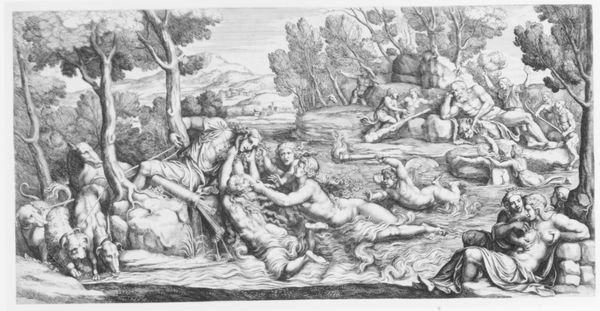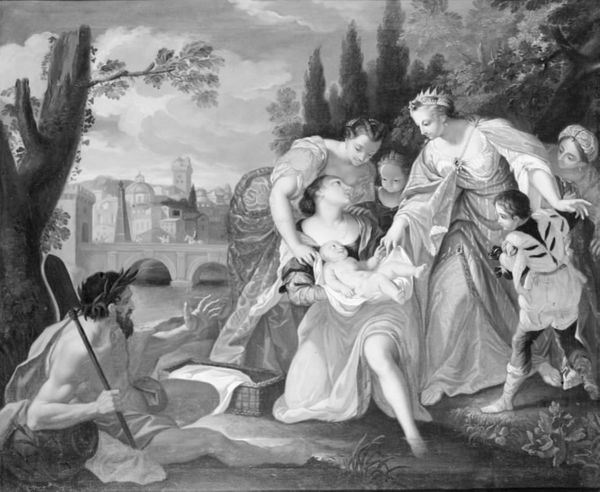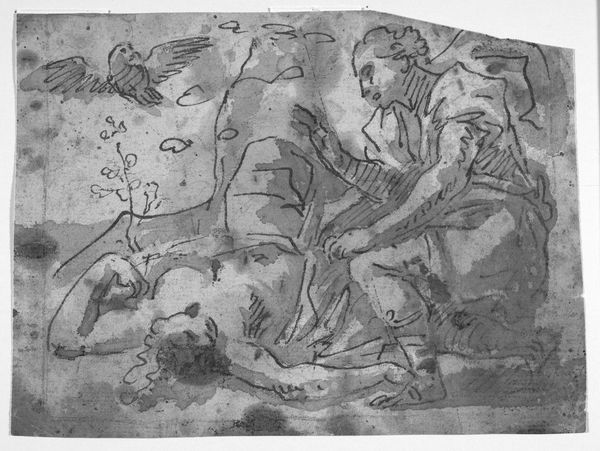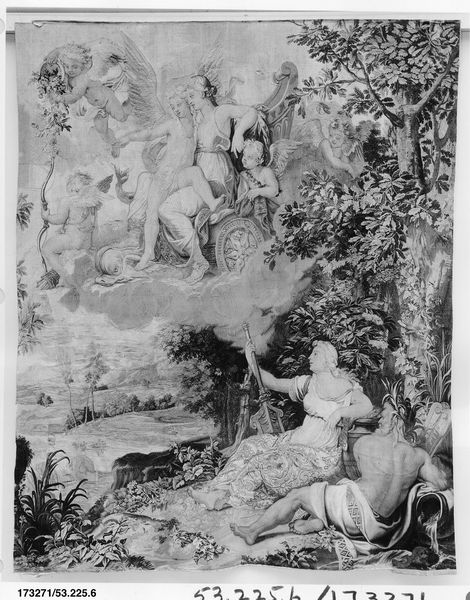
drawing, graphite, ivory
#
portrait
#
drawing
#
landscape
#
charcoal drawing
#
folk-art
#
graphite
#
genre-painting
#
northern-renaissance
#
monochrome
#
graphite
#
ivory
#
monochrome
Dimensions: 5.5 cm (height) x 7.7 cm (width) (Netto)
"La petite menagère" was painted by Cornelius Høyer in the late 18th century, likely using oil on copper. Although the image itself depicts a simple domestic scene of a young woman feeding chicks, its materiality tells a different story. Oil paint was typically made by hand, grinding pigments into linseed oil. Copper panels were carefully prepared by hammering thin sheets and burnishing the surface to create a suitable ground for painting. In 18th century Europe, both labor-intensive materials were traded on a global scale. The pigments would have been imported, and the copper mined and smelted. Looking closely, you can see the smoothness of the copper allows for meticulous detail despite the work's small size. The painting speaks to the labor and resources involved, as well as the social context of the time. Although it depicts a modest subject, this object itself would have been a luxury item. By considering the materials and processes behind "La petite menagère," we gain a deeper understanding of its meaning, moving beyond conventional art history.
Comments
No comments
Be the first to comment and join the conversation on the ultimate creative platform.
